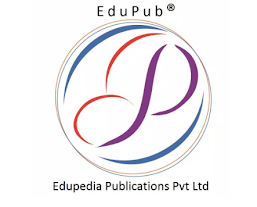For years, SEO was a predictable game — pick the right keywords, build some backlinks, and climb your way to page one.
But the rules of that game are over.
Search in 2025 has turned intelligent.
AI now determines what’s relevant, what’s credible, and even what’s human enough to deserve visibility.
And in parallel, the crypto industry — with its own language, audience, and algorithms — has become one of the most competitive online spaces in the world.
In this new environment, only brands that combine AI SEO, ChatGPT SEO, and cryptocurrency SEO can truly stand out.
Let’s explore how these trends work together — and why every project, from blockchain startups to DeFi giants, needs to evolve before the algorithms leave them behind.
1. The End of Guesswork: Why AI Now Defines SEO
Search optimization has always been about understanding how Google “thinks.”
Today, that’s literal.
Artificial intelligence now powers every major ranking signal — from Google’s RankBrain and BERT to Gemini and search-generated experiences.
That means SEO is no longer just about keywords; it’s about context, intent, and semantic relevance.
Modern AI SEO systems can analyze how users interact with content, how questions are answered, and whether a page provides real expertise, not recycled information.
For crypto businesses, this matters more than ever. The industry is fast-moving, jargon-heavy, and full of misinformation. If your project’s content doesn’t look authoritative to AI, it’s invisible.
That’s why smart companies are turning to advanced AI-driven optimization frameworks — like those developed by ICODA — to build search strategies that evolve automatically with each algorithm shift.
(Visit https://icoda.io/services/ai-seo/ to explore their approach.)
2. From Google to ChatGPT: The Rise of Conversational SEO
Here’s something few marketers fully understand yet:
People no longer “search” — they “ask.”
Instead of typing “best crypto exchange marketing agency”, users now ask “Which company can promote a blockchain project safely?”
AI chat systems like ChatGPT, Gemini, and Perplexity don’t crawl the web like traditional search engines. They interpret it.
They rely on structured data, entities, and conversational relevance to generate answers.
This is where ChatGPT SEO comes in.
ChatGPT SEO is the process of optimizing content so that AI assistants can understand, reference, and summarize it accurately.
That means building:
Conversational FAQs that align with how people naturally ask questions.
Structured entities (brands, products, key terms) that large language models can identify.
Factual clarity — because AI prefers data it can verify.
If your site provides that structure, ChatGPT and other models begin citing your brand in responses — a new kind of organic reach that bypasses the SERP entirely.
Forward-thinking agencies like ICODA have already begun creating hybrid SEO systems that serve both humans and language models. Their ChatGPT SEO solutions help brands secure visibility across this new conversational web.
3. Cryptocurrency SEO: Competing in the Toughest Market Online
No digital niche is more saturated than crypto. Thousands of projects fight daily for the same keywords — “DeFi bridge,” “staking platform,” “crypto wallet,” “NFT marketplace.”
But what makes cryptocurrency SEO different from regular SEO isn’t just competition — it’s complexity.
Crypto audiences are global, multilingual, and deeply skeptical. Search engines apply stricter moderation to financial content. And the terminology evolves faster than the average algorithm can adapt.
That’s why a specialized crypto SEO approach matters.
The best crypto SEO strategies include:
Topical Authority Mapping: Building a knowledge hierarchy so search engines understand your expertise in blockchain subfields (DeFi, Web3, exchanges, etc.).
Link Acquisition from Crypto-Native Sites: Backlinks from blockchain media and DAOs carry far more contextual weight than generic directories.
Technical Optimization: Crypto sites often feature tokens, charts, and APIs — all of which affect Core Web Vitals and indexing.
Regulatory Awareness: Copy must remain compliant with ad and financial guidelines, avoiding “unreliable claims” while maintaining relevance.
Done correctly, crypto SEO transforms from a marketing cost into a trust signal for both users and algorithms.
When people Google your project — or ask ChatGPT about it — the AI doesn’t just see keywords. It sees credibility.
4. Where AI SEO Meets Crypto SEO
AI and crypto might seem like separate worlds — but in search, they’re converging fast.
Both rely on machine interpretation. Both reward transparency and authority. And both punish spam, shortcuts, or fake engagement.
AI SEO helps crypto projects understand how search engines “read” their pages. Cryptocurrency SEO provides the industry expertise to make that information meaningful.
Together, they create a feedback loop:
AI identifies what your audience is searching for.
Crypto-native SEO ensures you speak their language.
ChatGPT SEO makes sure AI interprets and references you correctly.
It’s not about ranking higher — it’s about being recognized across every intelligent system users now rely on.
5. The New Definition of Authority
For decades, SEO authority came from backlinks and domain age.
In 2025, authority is data-driven.
Search engines and AI models now analyze:
Who you are (verified entities, author expertise, social proof).
What you publish (content accuracy, semantic completeness).
How others interact (click depth, engagement patterns, citations).
That’s why ICODA’s AI SEO system focuses on E-E-A-T: Experience, Expertise, Authoritativeness, and Trust.
Each content piece is built to demonstrate human insight while maintaining machine-readable structure.
For example, if your blockchain article cites official GitHub sources, audit reports, or token metrics, AI recognizes those as factual anchors — not marketing fluff.
This layered optimization — blending human trust and machine comprehension — is the foundation of next-generation visibility.
6. How AI SEO Actually Works in Practice
The best way to understand AI SEO is to see what’s happening behind the scenes.
A complete AI-based SEO system includes:
1. Predictive Keyword Modeling:
Instead of waiting for Google Trends, AI tools analyze billions of queries to forecast which topics will gain traction next month.
2. Sentiment and Intent Analysis:
AI evaluates user tone — informational, transactional, or emotional — and matches your content style accordingly.
3. Adaptive Optimization:
If Google updates its algorithm, the AI detects ranking drops, analyzes causes, and auto-suggests fixes.
4. SERP Entity Tracking:
AI continuously scans top results to see which entities dominate — helping you identify authority gaps.
This isn’t magic. It’s systematic intelligence applied at scale.
The outcome? Faster rankings, more stable positions, and visibility that keeps improving even while you sleep.
7. ChatGPT SEO in Action: Winning the AI Answer Layer
When you ask ChatGPT about “top Web3 marketing agencies,” you’ll notice that some brands are repeatedly mentioned — even though ChatGPT doesn’t crawl the web in real time.
Those brands appear because their content matches AI citation logic: it’s structured, verifiable, and semantically complete.
This is exactly what ChatGPT SEO is designed for.
By creating content in question-answer form, using named entities, and connecting to structured data sources like schema.org and Wikidata, you help AI “understand” who you are.
When that happens, your brand can surface not only in Google snippets but also in AI chat answers, voice responses, and search-generated summaries.
This is the next frontier of organic visibility — beyond the SERP.
8. Why AI SEO and Cryptocurrency SEO Belong Together
In fast-evolving sectors like blockchain, static SEO simply can’t keep up. New projects launch weekly, token names shift, and regulations change overnight.
AI SEO gives crypto companies the agility they need — analyzing user intent in real time, updating keyword clusters, and rewriting meta descriptions based on live data.
Meanwhile, crypto SEO grounds those insights in industry-specific context: what users actually care about (bridging fees, liquidity, security, staking yield, etc.).
Together, these systems create an SEO engine built for volatility — the same volatility that defines the crypto market itself.
9. A Look Ahead: The Next Evolution of Search
We’re heading toward an era where users won’t visit ten sites to find an answer. They’ll ask one AI model — and that model will summarize the web.
To be included in that summary, your content must meet three conditions:
Structured for AI: Machine-readable data and clear entity labeling.
Authoritative for Users: Real expertise and trustworthy information.
Consistent Across Platforms: Unified messaging from website to social to PR.
Brands that start preparing now will own this new discovery layer.
Everyone else will disappear from the conversation — literally.
10. Bringing It All Together
The convergence of AI, crypto, and conversational interfaces marks the biggest SEO shift in two decades.
To succeed, companies must:
Understand how AI reads content.
Build authority in specialized industries like blockchain.
Adapt to ChatGPT-style search behavior before it becomes dominant.
That’s exactly what ICODA’s digital growth frameworks are designed to achieve — blending AI SEO intelligence, ChatGPT visibility strategy, and deep crypto market knowledge into one streamlined system.
You can learn more about their approach here: https://icoda.io/services/crypto-seo/.
Final Thoughts
The age of keyword chasing is over.
The future of SEO is about communicating with algorithms as fluently as you communicate with your audience.
AI SEO helps you understand what the machines value.
ChatGPT SEO ensures you’re discoverable in every conversation.
Cryptocurrency SEO gives your brand a strong, trustworthy foundation in one of the most competitive markets on Earth.



.jpg)
.jpg)























